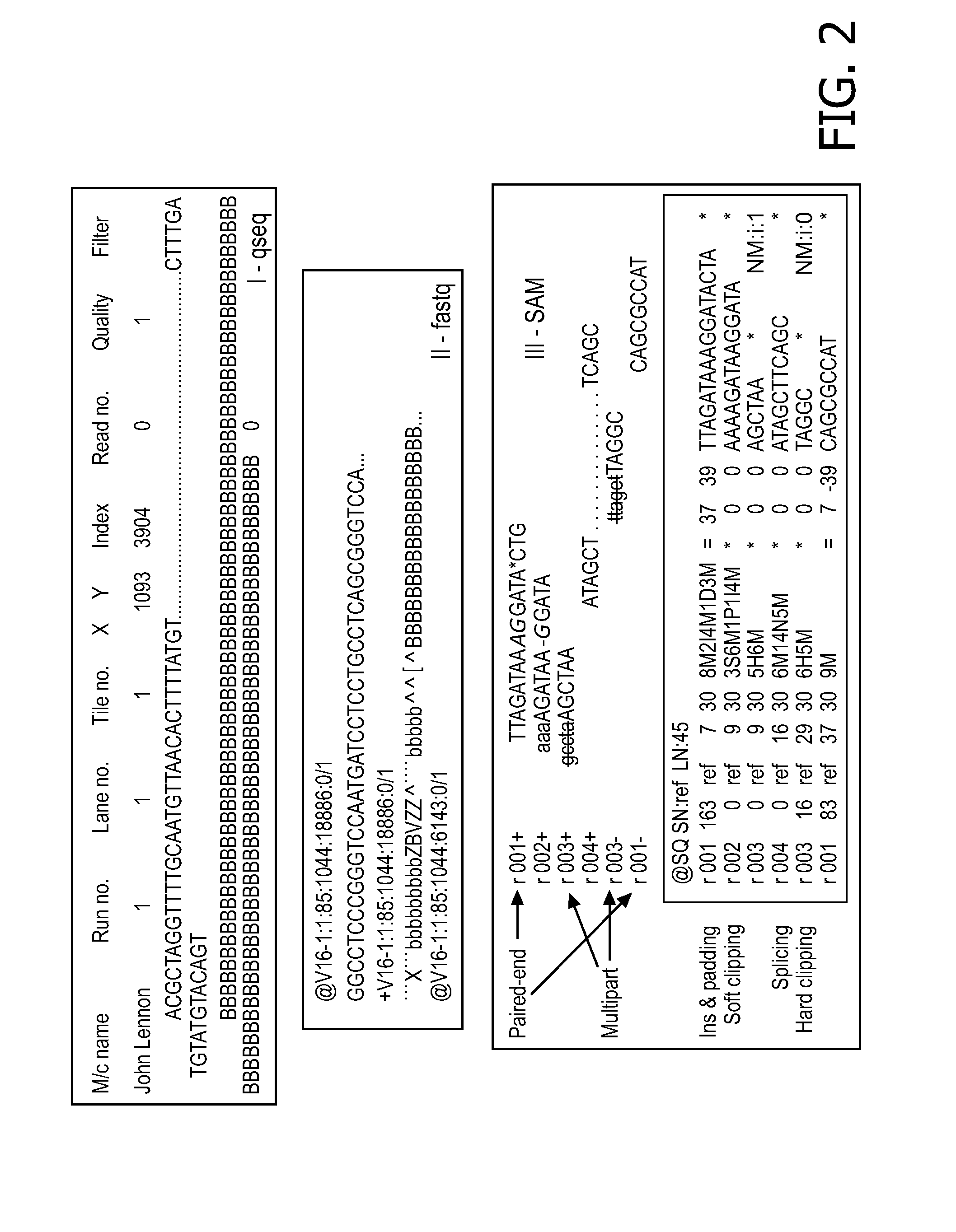Method for Assembly of Nucleic Acid Sequence Data
- Summary
- Abstract
- Description
- Claims
- Application Information
AI Technical Summary
Benefits of technology
Problems solved by technology
Method used
Image
Examples
example 1
Reference and De Novo Alignment of the Sequence Reads to Establish the Exact Repeat Content of the AVPR1A Gene
[0124]Since the repeat content (number of repeat) of AVPR1A gene is related to behavior, it has significant health implication. Accordingly, an experimental evaluation was carried on the basis of a reference and de novo alignment of the sequence reads to establish the exact repeat content of the AVPR1A gene.
[0125]Reference alignment was used for mapping the reads to the genomic coordinates and de novo for determining the exact repeat content in AVPR1A gene (see FIGS. 5 and 6).
[0126]Qseq files obtained from Illumina GAIIx were first converted into fastq format. These files were then aligned to a human reference (GRCh37) genome using BWA aligner. A consensus sequence was built using SAM output from BWA alignment. We know that RS3 polymorphism in AVPR1 gene is highly polymorphic in nature and is associated with clinical phenotype, so we extracted the reads from same chromosome ...
PUM
 Login to View More
Login to View More Abstract
Description
Claims
Application Information
 Login to View More
Login to View More - R&D
- Intellectual Property
- Life Sciences
- Materials
- Tech Scout
- Unparalleled Data Quality
- Higher Quality Content
- 60% Fewer Hallucinations
Browse by: Latest US Patents, China's latest patents, Technical Efficacy Thesaurus, Application Domain, Technology Topic, Popular Technical Reports.
© 2025 PatSnap. All rights reserved.Legal|Privacy policy|Modern Slavery Act Transparency Statement|Sitemap|About US| Contact US: help@patsnap.com



